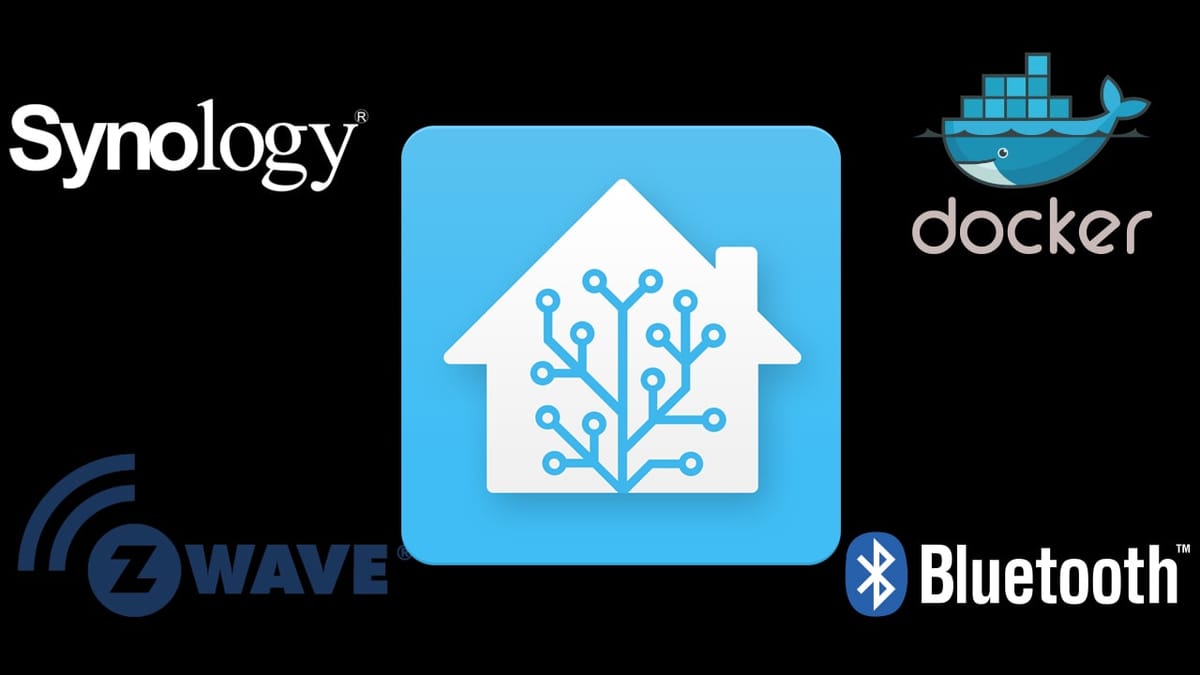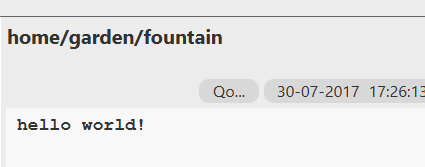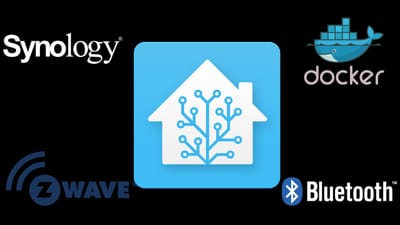Having devices in your home communicate with each other enables you to create a smarter home. The more information you can feed your smart home controller or software, like Home Assistant the better. MQTT offers a light weight and fast way to send information between devices.
How It Works
You first need to setup a MQTT Server, or "broker". Each device will publish or subscribe to a topic on the broker. The topics can be anything, such as the state of a door lock (locked or unlocked), the current temperature etc.
When a new message is published, the MQTT broker will send that message to devices that have subscribed to that topic instantly. This is very similar to the way PubNub works for commercial applications.
What You Can Do With MQTT
There's a whole range of applications you can use MQTT for. Infact, Home Assistant comes with support for many uses for MQTT, including:
Alarm Panels
Use MQTT to update the state of an alarm panels armed state, or get notified when your alarm panel is armed/disarmed. This allows you to do some automations such as sound an alarm if the alarm panel is armed, and motion is detected. Or, turn everything off when the alarm panel is armed.
Plant Sensors
Use a sensor to measure things like temperature, light levels, soil moisture and have the current values sent to your home automation software via MQTT. I personally prefer to use these Bluetooth flower/plant sensors, which also integrate nicely into Home Assistant.
Lights
Turn lights on and off by publishing an on/off command to a topic in MQTT.
Presence Detection
Use the OwnTracks app for iOS or Android to tell your Home Automation system where in the world you are. You can then use zones to let your house know when your phone is at home, at school or work.
Together with Rohan Karamandi, hear me break down the latest Home Assistant release and talk with other users of Home Assistant across the open-source community.
Benefits of a Local MQTT Broker
There may be situations where you need to publish updates to your MQTT Broker from outside your local network. If you use the OwnTracks app, you'll need to have constant access to your MQTT broker to publish your location.
If you don't have a static IP address, or feel uneasy about poking a hole through your Firewall and exposing an MQTT Broker, you might be better off using a cloud based MQTT Broker like CloudMQTT.
Of course, that's only if you need to publish or receive messages outside of your home network. Using a hosted MQTT Broker outside of your network has some concerns.
- Internet Connection Required - If your internet connection drops out, you'll lose your connection to the MQTT Broker. This means your lights, alarm panels and anything else you have talking with MQTT will stop talking to each other. You don't want to come home during a storm to internet lines down, and not able to disarm your alarm or turn on the lights because the internet is out.
- Latency - It can take a few seconds longer for your MQTT messages to be received when using a hosted MQTT Broker. Imaging pressing a switch to turn the lights on, but having to wait two seconds before the lights turned on. Possibly longer if someone is streaming Netflix and slowing down your internet connection.
For those reasons, I think it's always better to run a local MQTT Broker. If the internet drops out, as long as my internal home network is up, everything is still in business.
Enter Docker
I'm a huge fan of Docker, and Dockerizing all my things. I've got Home Assistant setup on my Synology Diskstation NAS thanks to Docker, as well as a whole bunch of other micro services to compliment my smart home.

Using Docker, we don't have to worry about installing software package x to get y working. Docker installs everything it needs for the service (in this case MQTT) inside its container.
The great thing about Docker is you can run it on a variety of platforms, such as a Raspberry Pi, a windows PC (sort of) and of course like me, a linux based NAS such as a Synology Diskstation.
Installing MQTT with Docker Commands
Depending on your machine you may have an interface for you to add Docker containers. Synology has one, and the official Docker for Windows has one too. I prefer to setup Docker containers using the command line. The commands below should work on any system where you've already installed Docker.
For Synology users, there's also one big advantage to using the command line. You can add some options to your Docker containers which the Synology Docker Package doesn't allow, including automatic restarting of your MQTT broker if it goes down. Which can come in quite handy.
Before you can run any Docker commands on your Synology NAS, you'll need to have SSH configured, and root access (if you're on DSM5). I cover this in my Home Assistant setup post, so be sure to check that out first if you haven't already
Let's go ahead and paste this command into our terminal. I'll break each option down.
docker run --name mqtt --restart=always --net=host -tid -v /volume1/docker/mqtt/config:/mqtt/config:ro -v /volume1/docker/mqtt/log:/mqtt/log -v /volume1/docker/mqtt/data/:/mqtt/data/ toke/mosquittoIf you're running using a Synology NAS on DSM6, be sure to prefix that command with sudo.
docker run tells Docker to run a container with the parameters we're parsing.
--name mqtt The name flag will allow us to easily identify which container is running MQTT. This is useful if we need to do some commands against the container (like starting, stopping etc) later.
--restart=always This is a powerful and handy flag to set. This will tell Docker to keep trying to re-start the MQTT Broker if it crashes, or on boot of the system. (This is one of the flags you can't set when using the Synology Docker DSM Interface).
--net=host Another important and powerful flag. This gives your MQTT Broker full network access. This allows you to use 127.0.0.1 as the IP address of your MQTT Broker in Home Assistant, if you followed my setup guide. (This is one of the flags you can't set when using the Synology Docker DSM Interface).
-itd This is actually three commands in the one. The important one is d. This tells Docker to run in detached mode. Once Docker runs the container, our SSH session is returned to us. If we don't specify this, we'll see the output from the MQTT Broker in our SSH console.
-v /volume1/docker/mqtt/config:/mqtt/config:ro Here we're creating some mount volumes with the various -v flags. This will allow configuration to persist across reboots, as well as data. So, if your MQTT Broker goes down, any persistent messages you may have sent over the Broker should come back up. You can place it in any folder you like. Whatever you choose to use, the folder must exist before you will be able to start the MQTT Broker. If you want to use the same folder as I did above, you can create it by running mkdir -p /volume1/docker/mqtt/config
toke/mosquitto Finally this tells Docker which container to lookup on DockerHub. I've been using this image from Toke without issue for many months now.
Testing MQTT
So we've got our Docker container up and running, but how do we know its working? There's a handy free program called MQTT.fx which is available for Mac, Windows and Linux. Or if you're using Chrome there's a free Chrome Extension called MQTT Lense.
I'm going to use MQTT.fx, let's try to connect to our MQTT server. My NAS's IP address is 192.168.1.3. MQTT runs on the port 1883 by default.
In MQTT.fx, press the settings icon to setup a new connection. We'll use the server address details above for this. Once we've setup our new connection, select it from the list and press the blue connect button.

Once you've connected to your MQTT server, we should first "subscribe" to a topic. Let's move to the subscribe tab, and enter a topic to subscribe to. For now, let's choose the topic home/garden/fountain which is the default for MQTT fx.

Now that we've subscribed to our topic, let's move back to the Publish tab, and now we'll send a message on the home/garden/fountain topic. In the message body, let's type "hello world!" and then press the blue Publish button.

If we switch back to the Subscribe tab, we should now see our home/garden/fountain topic has a message with hello world!

Wrapping Up
We've now got an MQTT server running on our Synology NAS. We can now use it to communicate securely and quickly through our local network.
You'll most likely want to use this in combination with OwnTracks to have your phones GPS location sent to your Home Automation software, like Home Assistant. Using your own MQTT server, your privacy is more secured than using a public MQTT server. Before you can send messages to your MQTT server outside your local network though, you'll need to expose your MQTT server port (1883 by default) to the world through your router, and use your IP address or a service like duckdns.org if your IP address changes.
In the future I'll be doing some writeups about how I use my local MQTT server for various things around my smart home.









